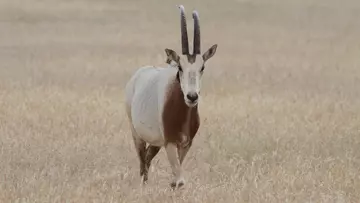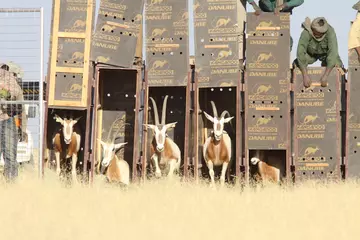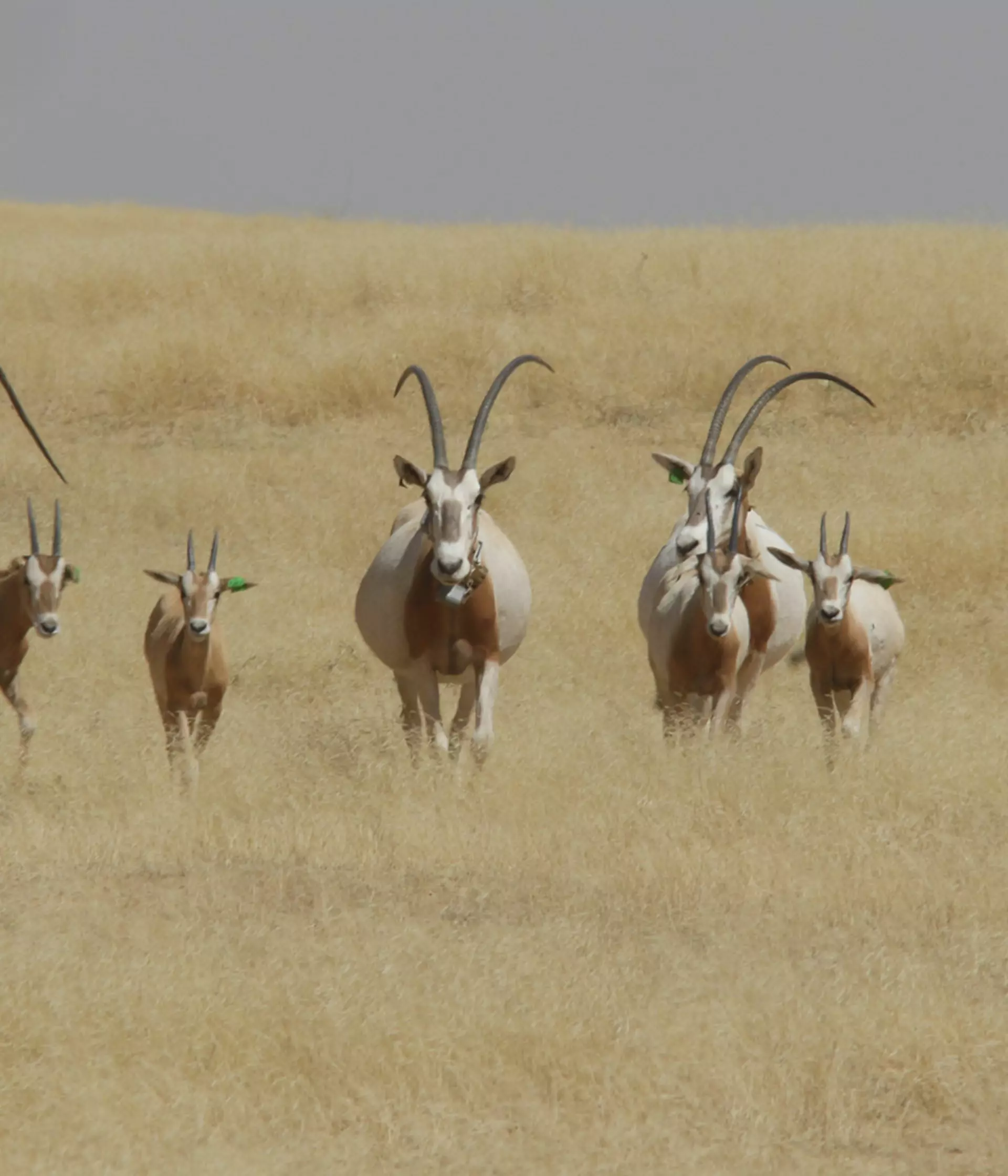
A species of ‘desert antelope’ bred at Whipsnade Zoo and released into the wild has today (Monday 11 December) been downlisted from Extinct in the Wild to Endangered on the IUCN Red List following global conservation efforts to save its species.
The scimitar horned oryx (Oryx dammah), an antelope with long curved horns, was declared extinct in 2000 by the IUCN due to its wild numbers dwindling below a viable size. Thanks to concerted efforts of conservation zoos and organisations around the world – including Whipsnade Zoo and ZSL, the international conservation charity which runs it – there is now a self-sustaining population thriving in their native habitat within Chad’s Ouadi Rimé, at the Ouadi Achim Faunal Reserve.
The Environment Agency of Abu Dhabi (EAD) coordinated global conservation organisations to reintroduce scimitar horned oryx, with Whipsnade Zoo and ZSL working in partnership with the Ministry of Environment, Fisheries and Sustainable Development representing the Government of Chad, Sahara Conservation (SC), the Smithsonian's National Zoo and Conservation Biology Institute (SNZCBI), the Royal Zoological Society of Scotland (RZSS), Saint Louis Zoo and Fossil Rim Wildlife Center.

Whipsnade Zoo has been breeding oryx for more than 30 years, and in 2014 two females from the conservation zoo were transferred to Abu Dhabi. Along with 23 oryx bred at other zoos, these individuals helped the Government of Chad and the Environment Agency of Abu Dhabi (EAD) to establish a genetically diverse “world herd” for reintroduction to the wild – a herd which now boasts 600 individuals.
ZSL has been involved in the ambitious conservation project from its inception in 1985. One of several global partners providing key support, ZSL worked with organisations including the Sahara Conservation Fund (SCF) to carry out early feasibility studies to ensure any reintroduction stood the best chance of success and has continued to provide scientific and conservation support to the reintroduction programme since then – including carrying out post-release monitoring of the herd.
ZSL Director of Conservation and Policy Dr Andrew Terry said: “Bringing the scimitar horned oryx back from the brink of extinction is a huge conservation success story, one that ZSL and Whipsnade Zoo are delighted to have played a part in – our own research has shown the power of zoos to reverse a species’ fate, and this story is absolute proof of that.”

The comeback of scimitar horned oryx represents the restoration of not just a species, but a whole ecosystem through the role they play in it. Maintaining grasslands in their native Chad through grazing and preventing the spread of desertification – their reintroduction is at its heart a nature-based solution helping to tackle the local impacts of climate change.
Terry added: “At ZSL, we know that if we are to truly tackle the issues facing our planet then we must stop treating biodiversity loss and climate change as two separate threats – you cannot solve one without the other. As globally important discussions conclude at COP28 this week, we must take a moment to celebrate this huge conservation success and use it to galvanise world leaders to drive future change and success.”

In November this year, Whipsnade Zoo announced the arrival of a new male scimitar horned oryx as part of the internationally coordinated breeding programme. Transferred from Aalborg Zoo in Denmark, 18-month-old Sabre has moved in with the Zoo’s herd of nine females, with the hope being that he will breed and help to further increase numbers of this species.
There are three international breeding programmes for the scimitar horned oryx coordinated in North America, Australasia and Europe with aims to ensure the herd at conservation zoos like Whipsnade, remain genetically diverse and act as a healthy reserve for the wild population.
